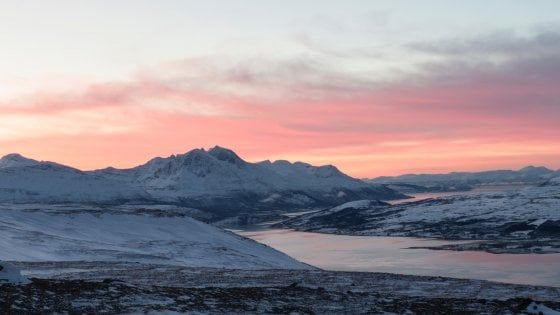The diet of our ancestors, at least those who lived a few thousand years ago in Norway, was rich in heavy metals. Probably because of the climate
Our ancestors' diet could have been dangerous, at least in some places. Along the coasts of Norway, for example, where the animals that were eaten by local populations contained levels of heavy metals well beyond the limits recommended today. Because of the climate at the time. In a study currently being published in the journal Quaternary International, researchers at the Universities of Artic in Norway and Stockholm claim that this was the case.
The idea of measuring the levels of heavy metals in the food of ancient populations is an attempt to understand how natural phenomena, such as coastal erosion caused by rising seas, could have affected the quality of products in the food chain. Long before the upheavals introduced by man in more recent times, such as mining in mines or the industrial revolution, contributed to the pollution of water and seas. To understand this, researchers chemically analysed the remains of two marine species high up in the food chain, the Nordic cod and the Greenland seal, dating back between 6500 and 3000 years in the ancient Nordic settlements. Both species, the authors explain, were used as a kind of representative sample to understand the share of heavy metals present in the local settlements at the time, since they were the most consumed marine foods.
The analyses thus established that the concentrations of heavy metals - such as cadmium, lead or mercury - were quite high in these foods. In detail, cadmium was about 22 times, while lead was 3-4 times as much as those allowed today in soft tissue. This was the case for cod, with similar levels of lead also in the Greenland seal, where the cadmium levels were lower - but still 15 times higher than the current levels, i.e. 15 times as much. Substantial, the researchers write, the levels observed for mercury, although below the current limits. Overall enough to consider the Arctic diet of the time completely unsafe. "Harmful to humans, if not to society as a whole," the authors write, risking that populations may have balanced the harmful effects of these foods by consuming more terrestrial resources. The analysis of some human remains dating back to that time, as reported in an article in Science, could help to understand the effects of these substances on the health of local populations.
The marine food contaminations observed are quite astonishing, the researchers write, considering that heavy metal pollution in the areas was until now believed to have been produced by human activities in modern times. Although with various limitations and caution, what observed could be explained by climate change in the past, such as erosion caused by changes in sea levels, for example, especially for cod. And it would perhaps help, the researchers conclude, to make predictions about what awaits us in the future.
The idea of measuring the levels of heavy metals in the food of ancient populations is an attempt to understand how natural phenomena, such as coastal erosion caused by rising seas, could have affected the quality of products in the food chain. Long before the upheavals introduced by man in more recent times, such as mining in mines or the industrial revolution, contributed to the pollution of water and seas. To understand this, researchers chemically analysed the remains of two marine species high up in the food chain, the Nordic cod and the Greenland seal, dating back between 6500 and 3000 years in the ancient Nordic settlements. Both species, the authors explain, were used as a kind of representative sample to understand the share of heavy metals present in the local settlements at the time, since they were the most consumed marine foods.
Nabeel Ahmad is the founder of The Hustler's Digest





